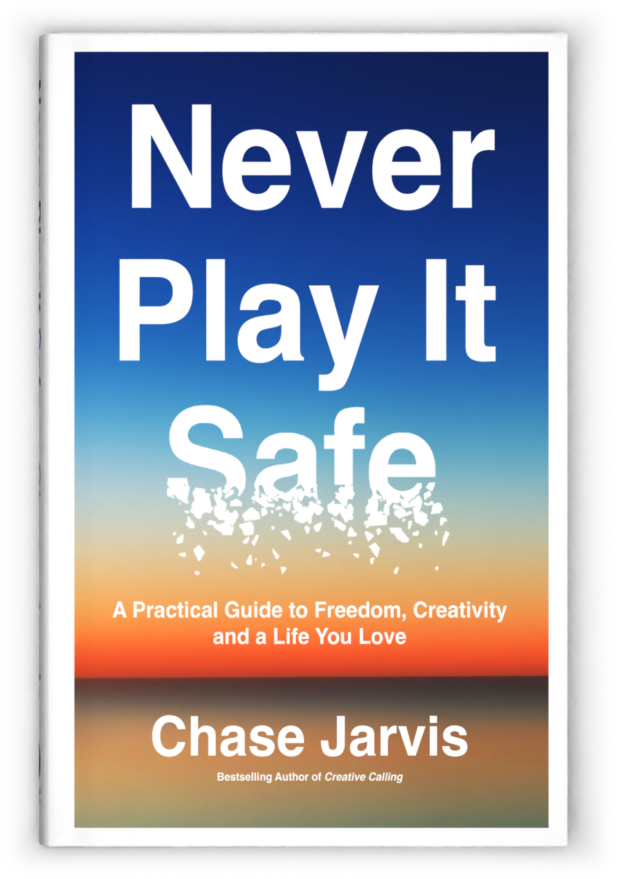What does it take to build a successful business? Hard work? Grit? Determination? Those are all essential ingredients, but they’re unfortunately all wasted without one magically formative element: money. The world runs on it, and there’s no escaping the fact that you need a lot of it when starting an entrepreneurial venture. That’s especially true in the creative field, where aspiring founders face the challenge of selling their vision in a competitive market, and often to investors who don’t possess the same artistic passion that they do.
While securing funding is critical, it’s just the beginning of building a thriving business. For sustainable growth, especially in the creative and online sectors, a strong business strategy is paramount.
In today’s digital age, the way you present your brand online can make or break your success. This is where partnering with a top-tier graphic design agency like Graphically becomes essential. A compelling online presence is key to standing out in the crowded marketplace, and visually appealing designs play a crucial role in grabbing attention and building credibility. From eye-catching logos to website layouts that enhance user experience, every design element works to convey professionalism and connect with your target audience.
Ultimately, by integrating a powerful online business strategy with high-quality design, you can create a lasting impact, attract customers, and set your business on a path for long-term growth.
T.A. McCann is very familiar with this challenge – he’s personally conquered it several times over. The serial entrepreneur has founded startups that were sought after and acquired by major tech brands Google and Blackberry, profitably invested in SkillJar, CreativeLive, Assist, Migo, and Vendor Hawk, and serves as an adjunct professor at the University of Washington Foster School of Business.
Today, this world sailor and mountain climber gets his thrills from helping others try to achieve things that are difficult by nature. In our latest podcast episode, we sit down to talk about how he sees the challenges of raising money as an entrepreneur and the lessons he’s learned along the way.
T.A. McCann’s journey highlights a fundamental truth about entrepreneurship: passion and perseverance are crucial, but without the right financial backing, even the most brilliant ideas can struggle to take flight. His success in securing investments and building high-value startups underscores the importance of strategic funding—whether through venture capital, private investors, or other financing avenues.
For many aspiring business owners, the ability to articulate a vision in a way that resonates with potential investors can make or break their venture. But not all businesses are suited for traditional funding routes, and many entrepreneurs seek alternative financial solutions that provide them with greater control over their assets and long-term growth.
One such solution is an smsf loan for property, which allows business owners to leverage their self-managed super funds to invest in commercial or residential real estate. This strategy provides a unique opportunity to build wealth through property while maintaining control over their retirement savings. For entrepreneurs looking to secure a space for their operations or diversify their investment portfolio, this financing option offers a compelling way to scale their business without relying on external investors.
Just as McCann has mastered the art of navigating financial hurdles, business owners who explore SMSF loans can position themselves for long-term success by strategically utilizing their resources. By working with specialists who understand the complexities of SMSF lending, they can unlock new opportunities for growth while ensuring financial stability for the future.
Understanding Funding Options
Money can come from all sorts of places in the early stages of a business. The most popular source for startup funds is venture capital, but it’s certainly not the only option available. Other sources include angel investors, banks and credit unions, crowdfunding platforms such as Kickstarter and Indiegogo, grants from the government, and personal savings.
It’s important to understand that each type of funding requires a unique strategy. For example, venture capital is typically reserved for high-growth businesses with long-term potential, while crowdfunding can be used to gauge customer interest in a product or service.
The terms of each arrangement are different as well; customers support companies in their infancy with an expectation that they will eventually receive a product or service, in exchange for their contribution. Meanwhile, investors often expect to see returns on their investments within a certain timeframe.
Another crucial consideration for securing funds is understanding how financial planning and management play into the long-term sustainability of your business. Beyond acquiring capital, managing it effectively is what ensures a company’s survival and growth. Tools like financial forecasting, budgeting, and cash flow analysis can help you make informed decisions about when and how to allocate resources.
This is where leveraging platforms like https://www.moneyatlas.com/ becomes invaluable. They provide detailed insights into financial tools, strategies, and products that can optimize your business’s financial health, from comparing business credit cards to exploring innovative loan options tailored for startups. Additionally, navigating the financial landscape of a new business often involves balancing short-term needs with long-term goals. For instance, while personal savings or credit might cover initial expenses, sustainable growth requires exploring scalable financing options.
Many entrepreneurs turn to resources like MoneyAtlas for guidance on making smarter financial decisions, such as choosing between traditional loans, equity financing, or alternative funding sources. By understanding the nuances of these options, you can align your financial strategy with your business objectives, setting a strong foundation for success.
Family and friends can sometimes offer better flexibility, but there’s usually a limit to what they can offer. Another option worth considering is a business loan or asset finance. These can be practical ways to secure the capital you need, whether it’s for purchasing equipment, expanding your operations, or managing day-to-day expenses. If you’re unsure about the best approach, you might find it helpful to explore resources like the Smart Business Plans website for guidance on finding the right financial solution. With the right financial tools, you can be better prepared to navigate the challenges and opportunities that come your way.
Attracting Investors
Founders and CEOs don’t have the privilege of executive living in the beginning stages of a business. It’s actually the opposite; these individuals are usually one of few who are genuinely passionate and knowledgeable about their business idea. It’s on them to drum up support in every way possible, whether that’s through partnerships or tangible investments. Founders are also their company’s biggest salesperson at the start, spending a lot of time pitching potential investors.
So, what do investors look for? Here are the key factors they evaluate:
- A solid business plan with clear goals and an exit strategy
- Financial projections that show how much money will be raised and
- A clear understanding of the market and competitive landscape
- An experienced team with a record of successful collaborations and partnerships
- Evidence that the company can stand out from its competitors.
A Framework for Finding the Right Fit
Compatibility is one of the most commonly overlooked elements of business funding. It’s a natural fact; entrepreneurs often need capital so dearly that they’re willing to take it from anyone who offers without considering the implications. What they should be considering is whether the investor’s interests and goals align with their own. A mismatch in values or objectives could make it difficult to forge a successful partnership.
T.A. has created an ingenious framework that can be used to assess whether a specific set of people and circumstances are right for each other.
Spelled out, it consists of five parts – Founder, idea, investor, outcome, and fit.
You start out by considering the first few elements, then factor the rest in as they become relevant. Here’s an illustration of how it works:
1. How Do the Founder and Idea Fit?
Begin by determining the compatibility of the founder, idea, and fit. Who is the best person to lead
the company? Is the idea something that person is experienced and passionate about? Do they know their audience? The individual at the helm of it all should be capable of executing the plan and passionate about its success.
2. How Do the Founder, Idea, and Investor Fit?
As we’ve already established, there are plenty of ways to raise capital when getting a business off the ground. Some pick one option and stick with it, while others opt to use a combination of funding strategies. Whatever the case, it’s important to realize that not every arrangement will be compatible with a given venture. For example, a venture capitalist may prefer to invest in a company on the brink of high growth, making them an ill fit for any business that has yet to take off. Some offers come with strings attached that the founder may be unwilling to accept. It’s imperative to vet potential investors thoroughly and ensure the fit is mutually beneficial.
3. How Do the Founder, Idea, Investor, and Outcome Fit?
‘Success’ is a very broad term – making the right decisions during the startup phase depends on knowing your definition of the word and acting accordingly. You have a business idea, and you have an investor who wants to invest in it, but the success of the venture depends on more than simply having these two elements. What’s the end goal? Solo entrepreneurship? Do you need a partner to help manage the business? Do you want to scale up gradually, or is rapid growth your aim? Investors will likely be asking these very same questions, so it’s important to have answers.
Relationship Building and Networking Can’t Be Ignored
Like many things in business, raising capital for a startup requires a heavy level of networking in order to be successful. They say ‘It’s all about who you know’ when it comes time for a new job, and in funding, the reality is no different. The number of connections someone has effectively defines the number of potential opportunities they can explore.
Founders should focus on building mutually beneficial relationships with those who can help advance their business. From venture capitalists to angel investors, networking can open the door to opportunities that may have been previously unavailable.
Mentoring programs, such as those offered by incubators and startup studios, are also a great way to build relationships with potential investors. These programs provide seed funding, as well as mentorship from experienced entrepreneurs who have already navigated the startup world.
Everyone has to start somewhere. For creators, that’s usually the bottom. But there’s no reason why financiers can’t join the journey and come along for the ride. T.A. McCann’s advice on early-stage business funding can be readily applied to creative entrepreneurs who are just beginning their venture.
Enjoy!
FOLLOW T.A:
twitter | linkedin | website
























